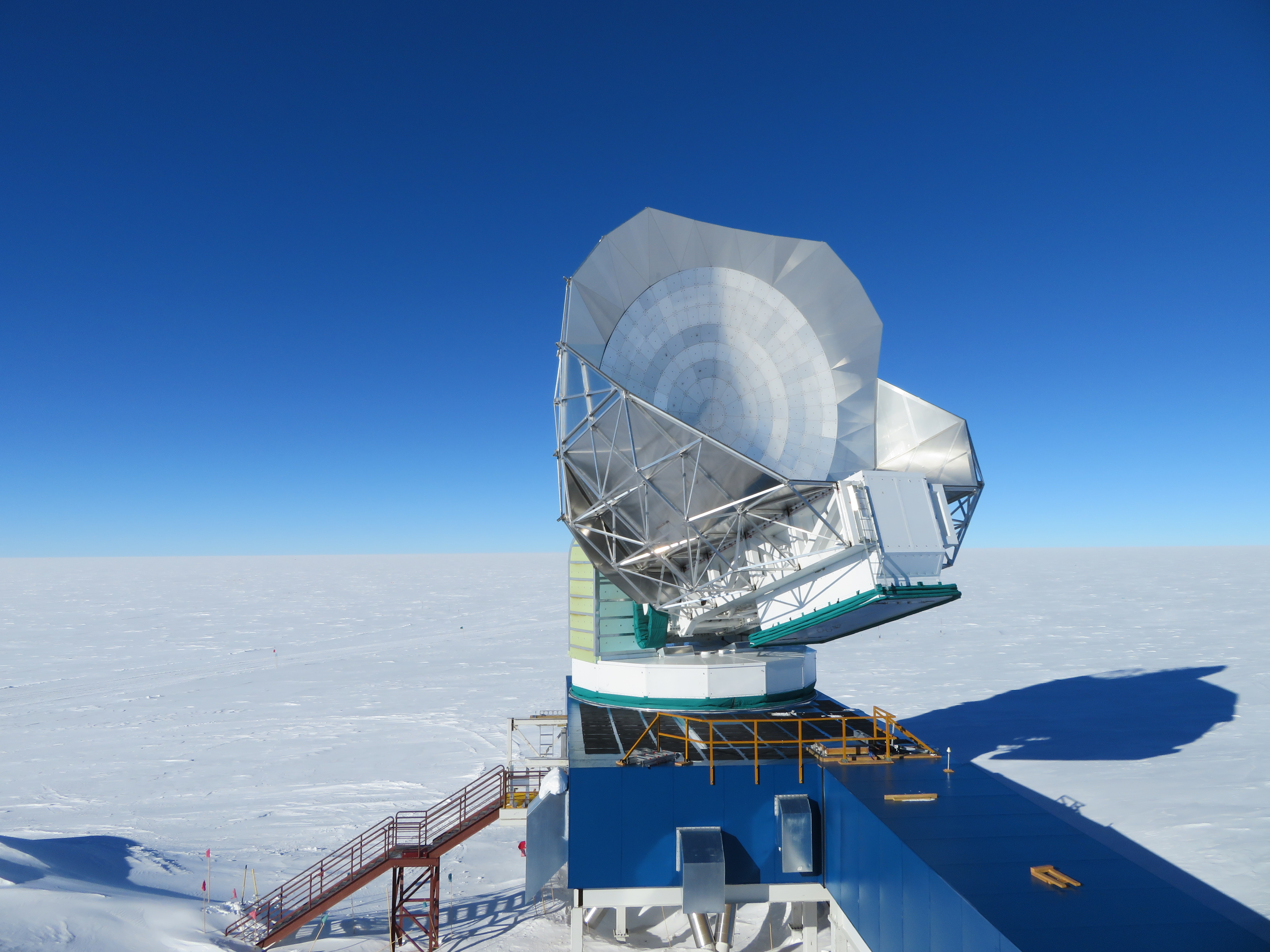
The South Pole Telescope has a 10-meter diameter primary mirror and is sited at the geographic South Pole. The extremely dry and cold atmospheric conditions at the South Pole are ideal for millimeter observations.
SPT-3G is millimeter wavelength camera currently observing on the South Pole Telescope (SPT). It's primary goal is to make arcminute resolution maps of the temperature and polarization of the cosmic microwave background (CMB). These maps will then be used to measure and place new constraints on our current model of cosmology. SPT-3G is particularly well-suited to measure the B-mode polarization signal induced by gravitational lensing of the CMB photons as they travel through the universe. This measurement will be used to clean the lensing signal from the total B-mode signal, enabling a deeper search for B modes originating from an inflationary epoch in the first moments of the universe.
SPT-3G is one of the most sensitive CMB receivers currently operating in the world, hosting a total of ~16,000 transition-edge bolometers that detect incoming microwave power at frequencies of 95, 150, and 220 GHz. The detectors are operated inside a cryogenic vacuum chamber at a temperature of approximately 0.3 Kelvin and readout using a custom frequency domain multiplexing system.
My contributions to the SPT-3G instrument include development of the readout system, integration with the detectors, and installation and commissioning at the South Pole. Now that the instrument is operating smoothly and continuously taking data, my focus has transitioned to monitoring operations and data quality as well as the scientific analysis of the data. SPT-3G is now in its sixth year of survey operations and will continue to operate through 2026.

The South Pole Telescope has a 10-meter diameter primary mirror and is sited at the geographic South Pole. The extremely dry and cold atmospheric conditions at the South Pole are ideal for millimeter observations.
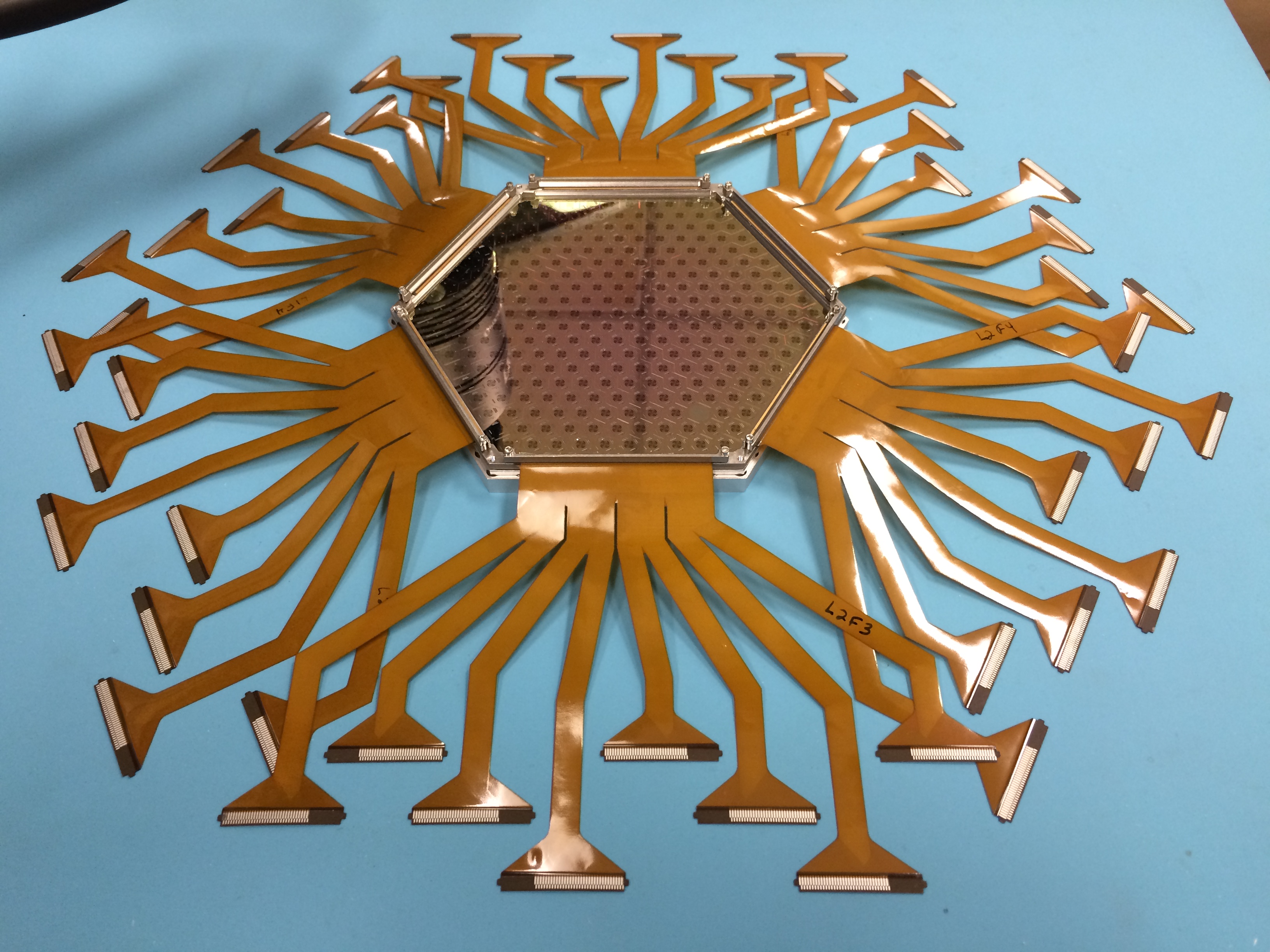
A single SPT-3G hexagonal detector wafer with flexible cables that connect the detectors to the rest of the readout chain. Each black spot on the wafer is an antenna that couples the incoming light to six different TES detectors (three bands and orthogonal polarizations).
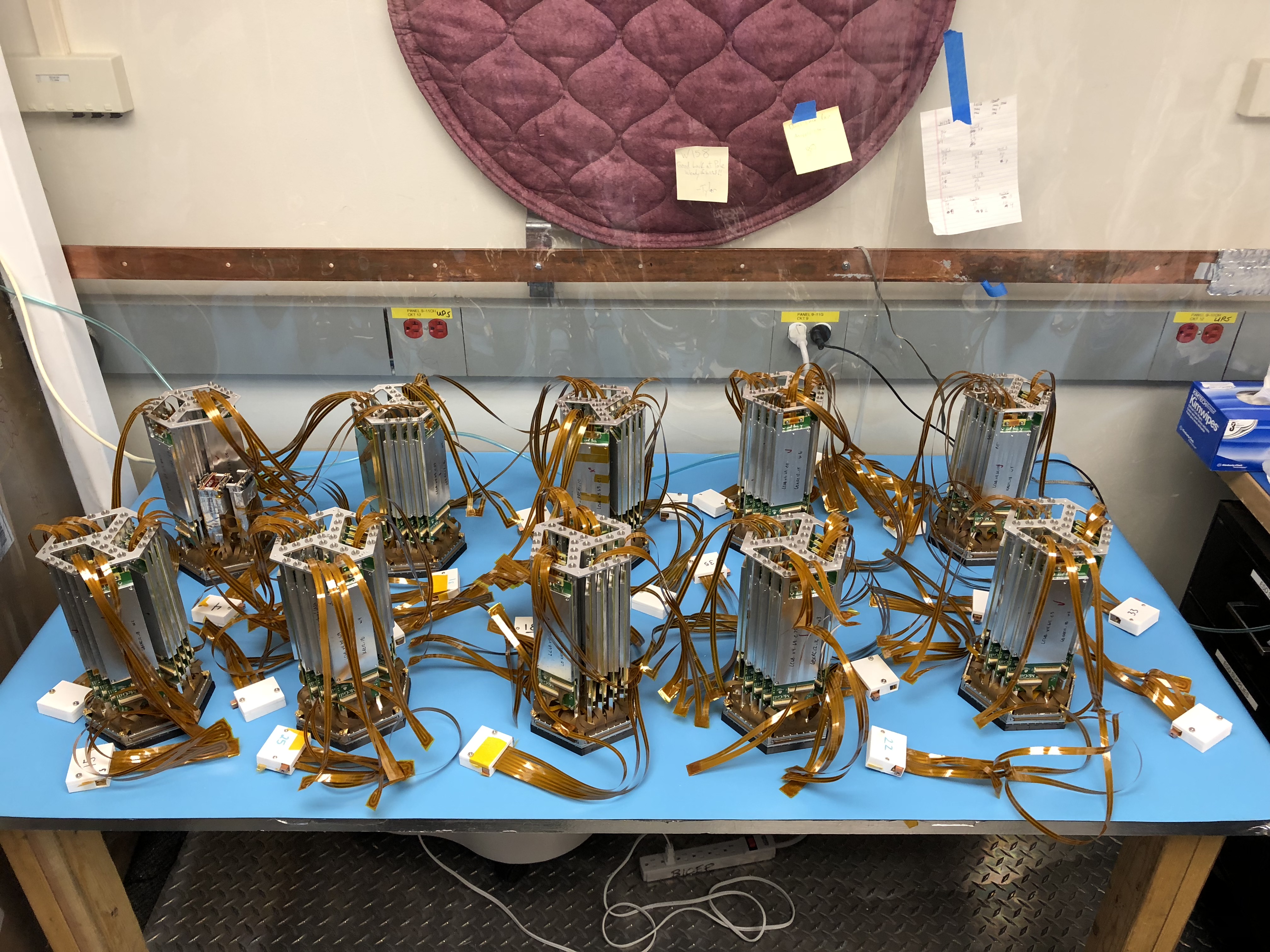
All ten detectors wafer assemblies complete with their cryogenic superconducting readout components and wiring prior to installation into camera.
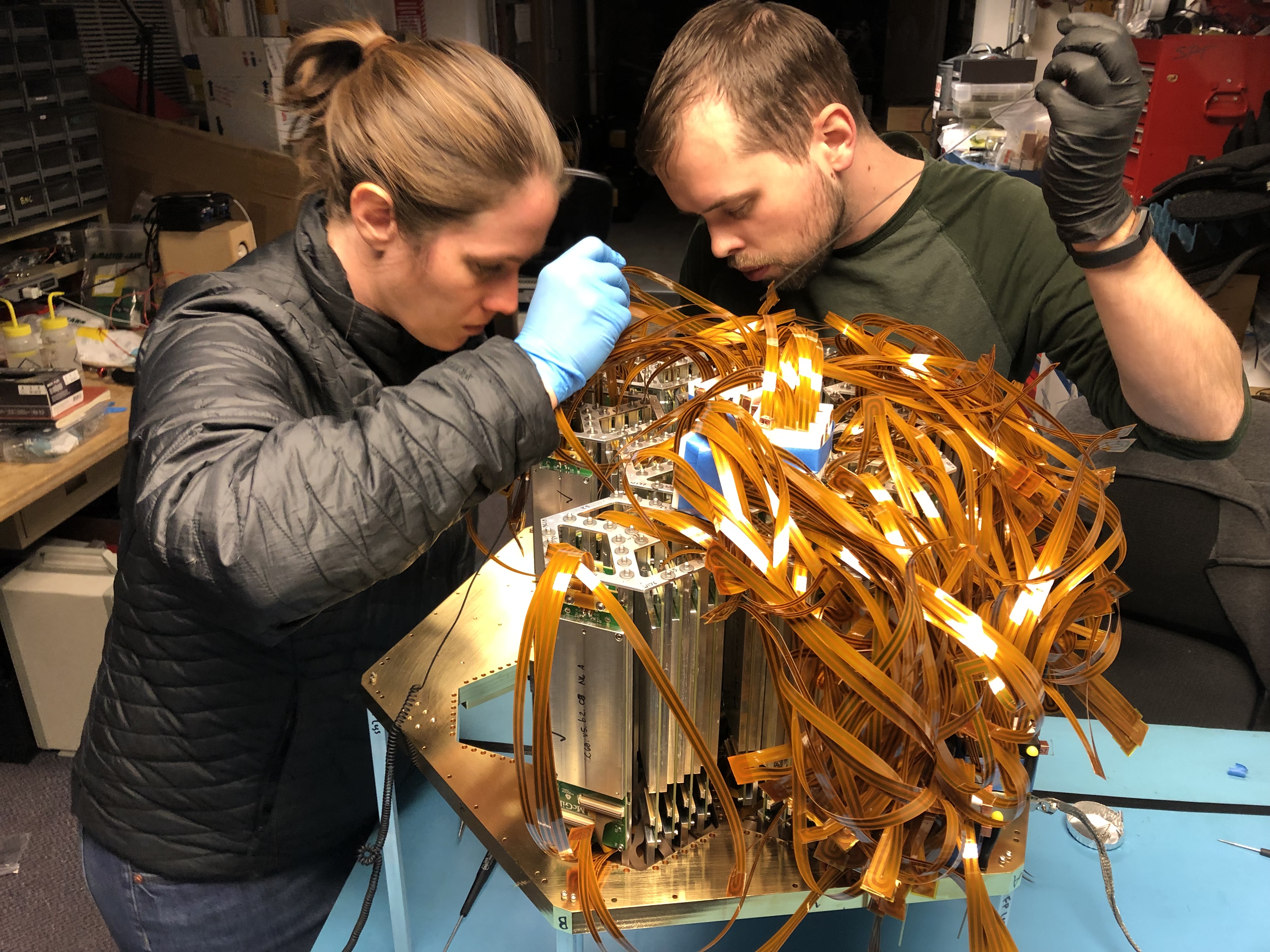
Installing the detector and readout assemblies into the camera structure.
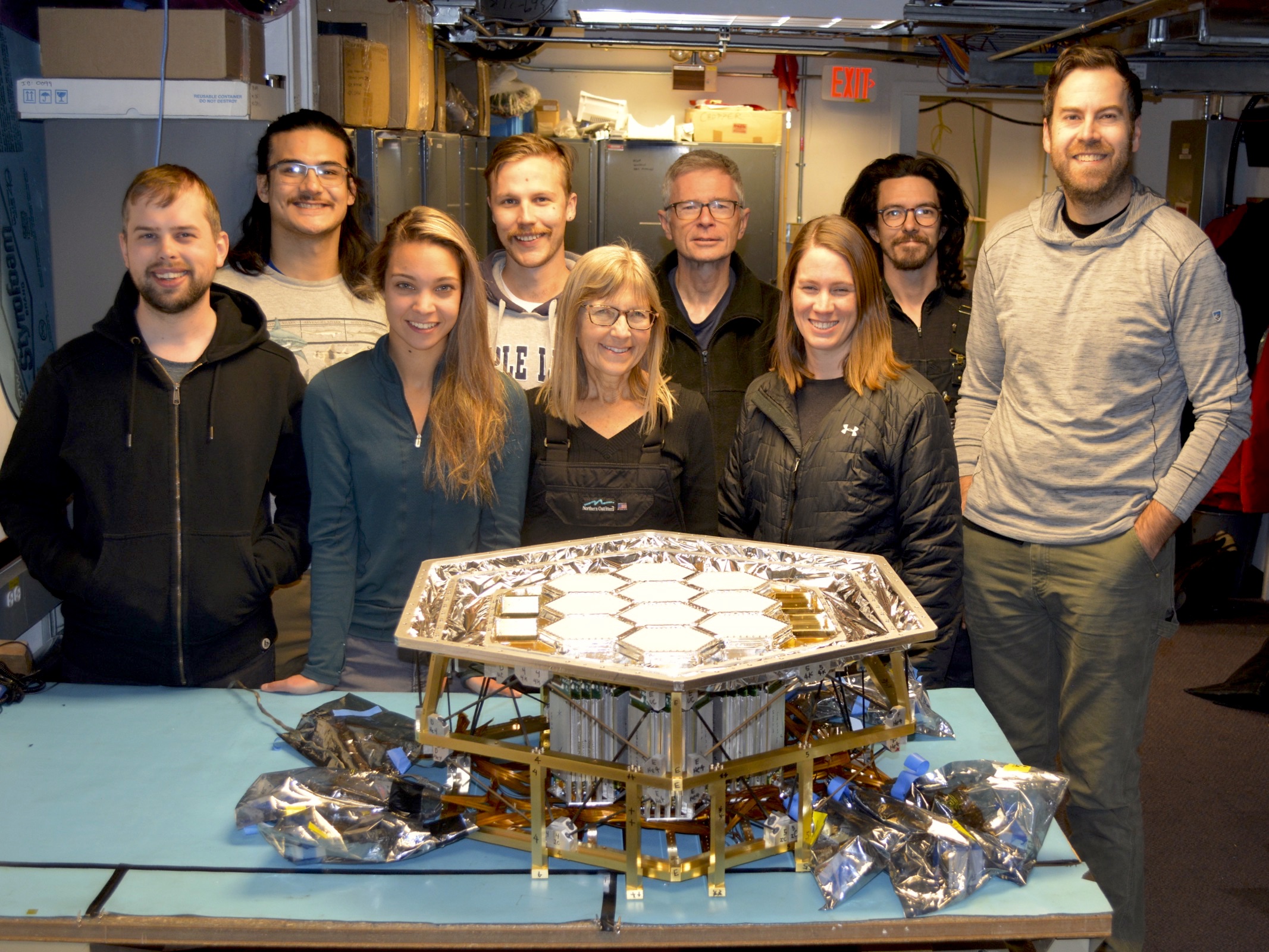
The fully assembled SPT-3G camera structure along with the installation and commissioning team prior to insertion into the cryostat.
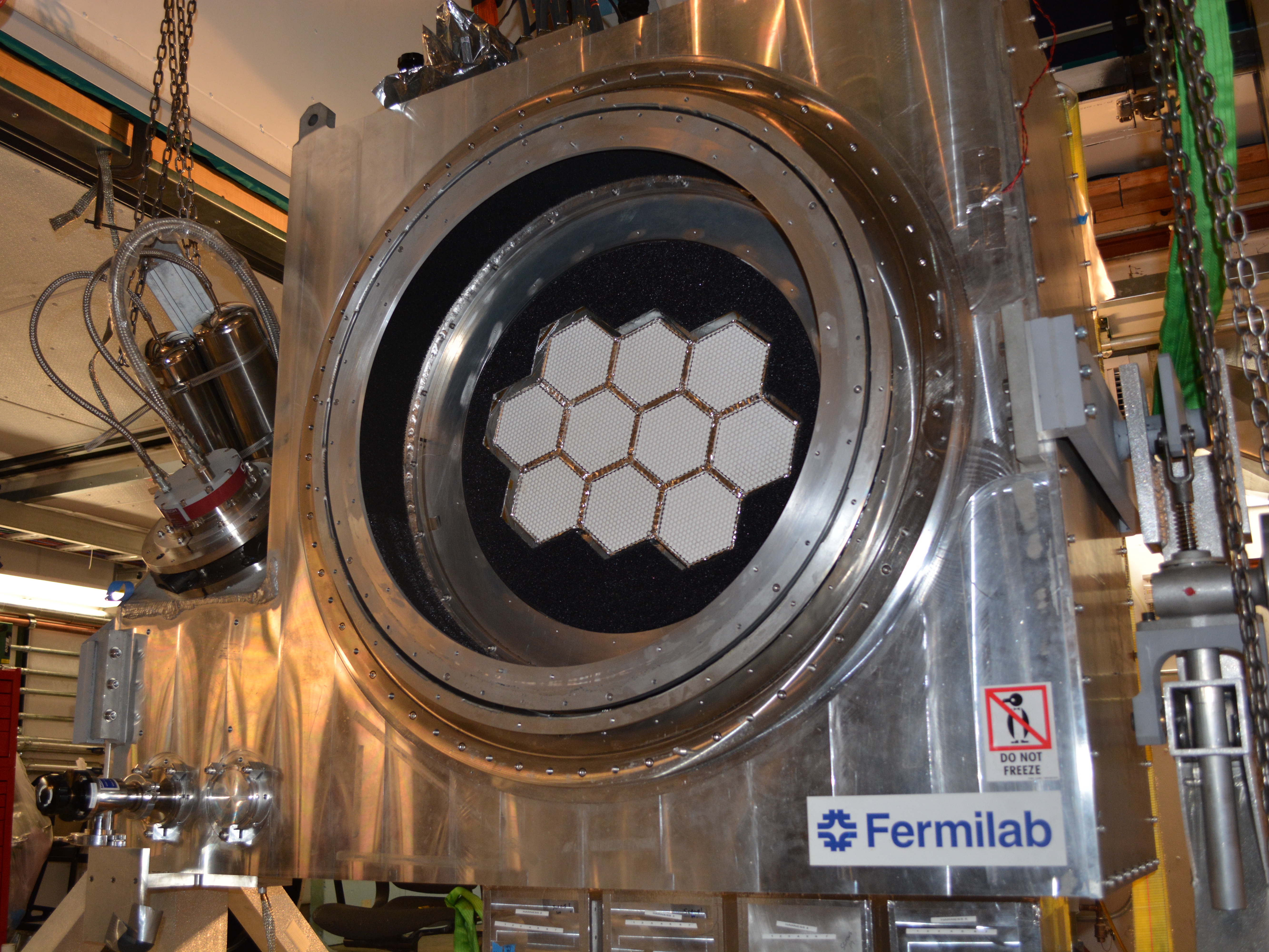
Looking in to the front of the cryostat (where the light will couple in) the 10 hexagonal detector assemblies are visible.
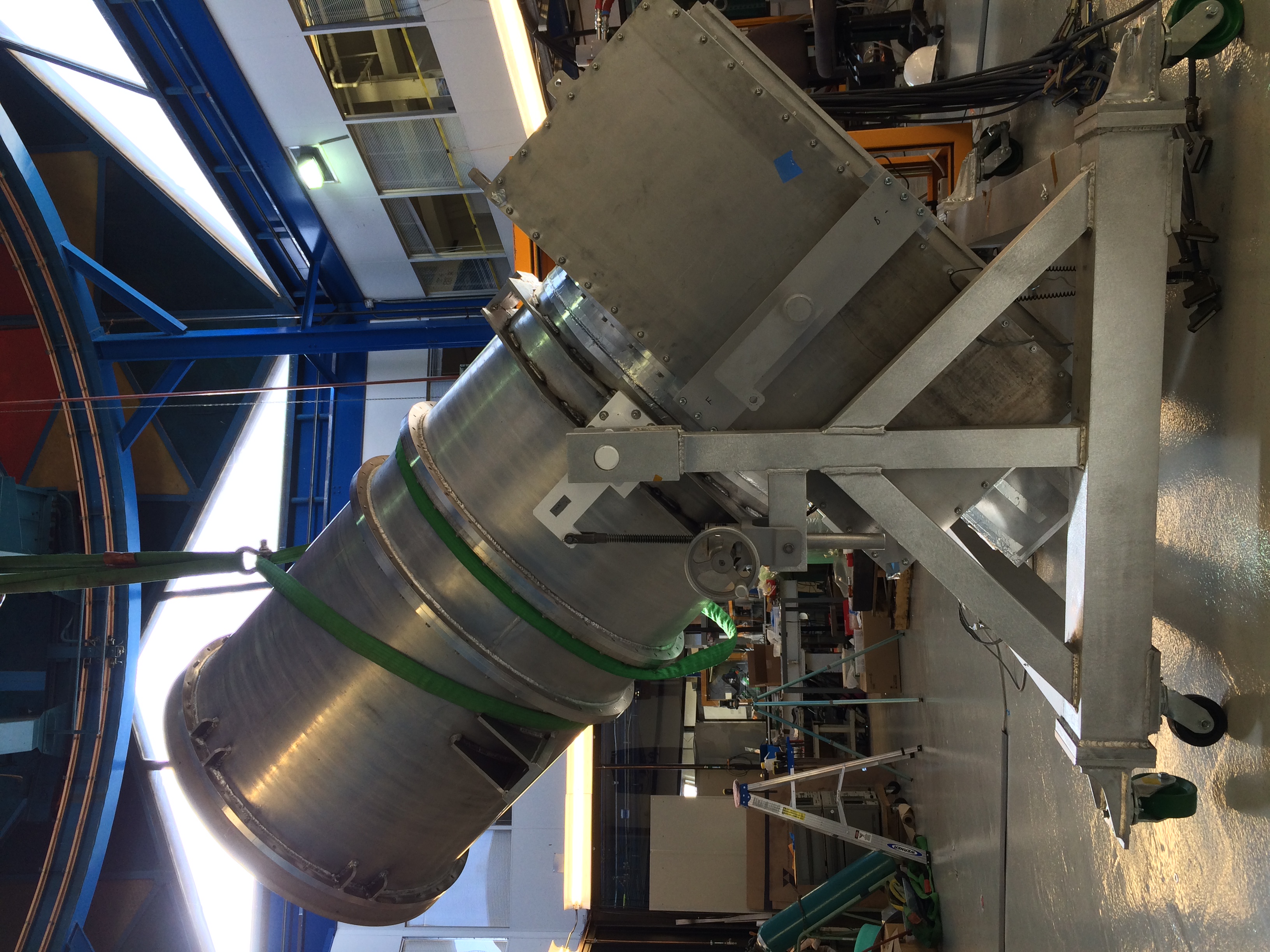
The fully assembled SPT-3G cryostat, with the optics tube connected on to the detector box. The completed instrument is then hoisted into the telescope receiver cabin.